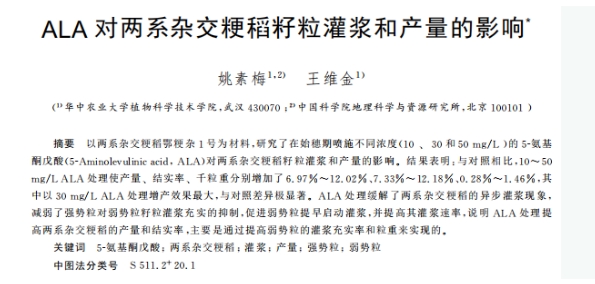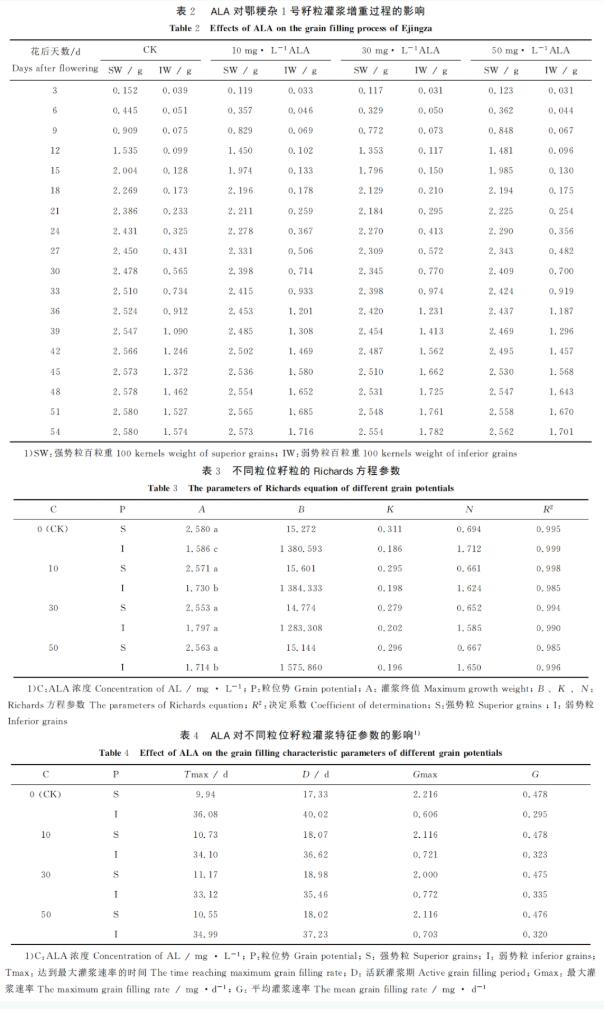
Yao Sumei et al., College of Plant Science and Technology, Huazhong Agricultural University and Institute of Geographic Sciences and Natural Resources Research, Chinese Academy of Sciences, published an article entitled "Effect of ALA on grain filling and yield of two-line japonica hybrid rice". The effects of 5-ALA (AL-1) on grain filling and yield of two-line japonica hybrid rice were studied.
1. Effects of ALA treatment on yield and yield components

As can be seen from the table, after 10, 30 and 50mg/LALA treatment, the yield of Ejingza 1 increased by 521.4 compared with the control; 839.0; 486.2kg/h2. The increase was 7.47%; 12.02%; The yield of 30mg/LALA treatment was the highest, and the difference was very significant compared with the control.
2. The influence of ALA treatment on grain filling

In summary, as shown in Table 3 above, ALA treatment with appropriate concentration at the beginning ear stage alleviated the asynchronous filling phenomenon of the two-line hybrid rice Ejingza 1, significantly increased the average filling rate and grain weight of the weak grain, indicating that the effect of ALA treatment on the weak grain was much higher than that on the strong grain. Therefore, the seed setting rate and 1000-grain weight of two-line hybrid rice Ejingza 1 were improved by ALA treatment mainly through increasing the seed setting rate and grain weight of weak grains.
The results show that. Compared with the control,10~50mg/ LALA treatment increased the yield, seed setting rate and 1000-grain weight by 6.97%~12.02%, 7.33%~12.18% and 0.28%~1.46%, respectively, in which 30 mg/LALA treatment had the largest yield increase effect, and the difference was very significant. Increase 7.33% to 12.18%. ALA treatment alleviates the phenomenon of asynchronous filling in two-line hybrid rice. The inhibition of strong hot grain on weak cushion grain filling was weakened, and the weak cushion grain was promoted to start filling early, and the filling rate was increased. The results showed that ALA external process improved the yield and setting rate of two-line japonica hybrid rice mainly by increasing the filling rate and grain weight of weak grain.